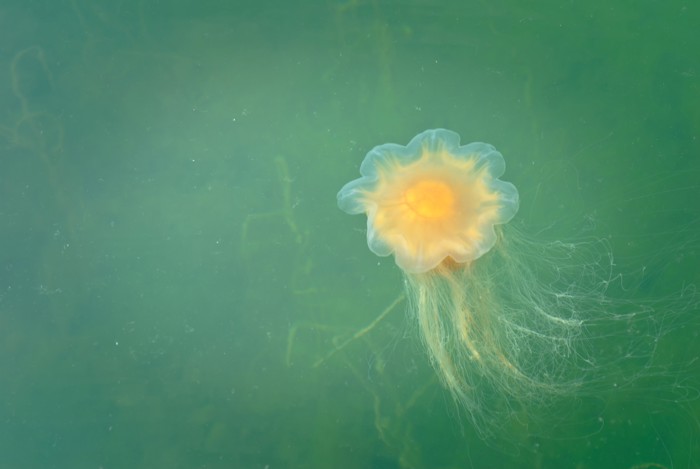The most common stinging jellyfish in Norway
The two most common species of stinging jellyfish you can encounter in Norwegian waters are the red or yellow-orange jellyfish Cyanea capillata, and the blue jellyfish Cyanea lamarckii.
The stinging jellyfish contain a venom that is composed of different substances. The venom is released from cells in the tentacles, also known as stinging threads, when these are stimulated mechanically or chemically.
The symptoms and treatment are the same for Cyanea capillata and Cyanea lamarckii.
Symptoms
In case of contact with the skin
The most common symptoms after coming into contact with stinging jellyfish threads in Norwegian waters are local symptoms on the skin:
- burning sensation
- pain
- redness
- swelling, possibly blisters
The symptoms often occur immediately, and are expected to gradually disappear within 24 hours.
Other symptoms such as nausea, muscle pain, shortness of breath, allergic or hypersensitivity reactions may occur, but are more rare. These are called systemic effects.
In case of eye contact
Stinging jellyfish stings in the eye can cause symptoms such as
- pain
- redness
- swelling
- increased tear production
In some cases, more serious eye reactions with intense, burning pain and sensitivity to light may occur.
Treatment
In case of contact with the skin
Rinse with seawater
- Remove any threads. You can do this with your hands.
- Avoid using fresh water.
- Do not rub or scrub. This can increase the release of toxins.
Warm water treatment until the pain subsides (up to 30 minutes)
-
For best results, treatment with warm water should be started as soon as possible.
-
Immerse the exposed skin area in warm water, shower or bath.
-
10 to 20 minutes is often sufficient.
-
The water temperature should be as hot as you tolerate, approximately 40 to 45oC.
Pain relief
- If pain-relieving effect is not achieved with warm water treatment, you can try local anesthetic ointment or hydrocortisone ointment, possibly antihistamines or NSAIDs.
- Local anesthetic ointments are not recommended in cases where large parts of the body have been burned by the jellyfish.
Contact with a doctor or healthcare provider may be appropriate
- If symptoms go beyond a local reaction.
- If small children have burned large parts of their body.
- If pain persists.
- If an allergic reaction occurs, or anaphylactic shock develops. This happens rarely.
In case of eye contact
- Rinse the eyes with water for 5 minutes. Use sea water or physiological saline.
- Medical treatment may be necessary if symptoms persist. Treatment is symptomatic.
- In rare cases, it may be necessary to remove stinging jellyfish threads from the eye, as the threads can become stuck.
- In most cases, eye irritation subsides within 48 hours.
Stinging jellyfish in other territorial waters
In warmer waters, there are many different species of stinging jellyfish that can cause serious symptoms in the event of "burning". In the worst case, life-threatening reactions can occur.
To avoid encounters with poisonous creatures of the sea, it is important to follow the advice of local authorities when swimming.
